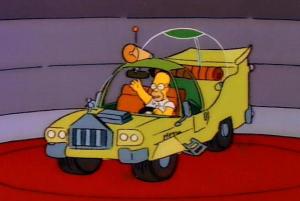I have been UX designer for a few years now and I have come to a realisation that this role doesn’t exist. UX design exists but UX designers don’t.
What do UX designers do?
UX design emerged as a need to help address the gap between the systems we were building and the people using them.
In the past designing software was the challenge but now it is standard. To stand out today, companies need to be designing software for the user. We now compete on user experience. To manage this transition, developers and product teams needed someone to help them get in touch with users. Enter the user experience designer.
Here is a small list of what an user experience designer is expected to do: user research, interviews, usability testing, information architecture, visual design and interaction design. To be an expert in each of those areas would require much time in each area to be proficient.
It’s too broad
With all of the expected tasks, no wonder some job applications for UX designers also include the word “unicorns” and “ninja”. Both are hard to find.
UX designers are all different because they come with different backgrounds. Some are better visual designers, better coders, better system analysts or better strategists. This expectation of knowing broad range of topics but being a specialist in one is known as a T-Shape designer. This means that each of us has our own special skill combination.
This means that one UX designer who did well in one scenario might be unfit for another due to the skill mismatch. It is hard to capture what a UX designer is.
My dilemma with the title “UX designer”
Some say we are the ones in the team who put the user first in our designs but when we design don’t do the actual visuals or code things up. Are we just a bunch of designers who were not technical enough to be developers or not creative enough to be designers?
Are we just a bunch of people who were not technical enough to be developers or not creative enough to be designers?
The world does not exist in grey boxes. It is in colour, it moves. A design that may work well in grey boxes as a concept but may fall apart when the visual design does not work. The design can fall apart when implemented and the experience does not behave as desired. Is it better to describe an interaction in words or as a prototype?
People think that having a UX designers means that they can solve it all. The biggest disservice to the title of “UX designer” is that some designers with this title think they can do it all, even when they can’t. It is worst when they can’t and try push their ideas as gospel because they are the UX designer.
Shouldn’t all of these areas be the responsibility of the whole team rather one single individual?
I feel that the way UX designer works overlaps with what a business analyst, information architect, product manager, user researcher, visual designer or interaction designer may do. If your team has all of these roles filled, then you don’t need a UX designer.
What can UX designers do now?
If you still want to call yourself a UX designer, it is time to get real. Do you do strategic planning, product management, user research, interaction design or content strategy?
UX designers that I have worked with are creative, highly logical and systematic thinkers but we need to ask ourselves, What are you good at? What are you not good at?
Stop presenting designs with lines like “I think” or “I feel” without with evidence or data to back it up.
If you say you focus on the user, then do it. Doing user research is a real thing. Go out and talk to users. Go out and get data. Without it you are just pretending to know. Empower members of the team to make the right decisions by giving them the right motives. Share the results in a way that each person on the team can understand. Long reports and documents mean nothing if no one reads them.
True collaboration
There is a need for teams understand their users. User research is fundamental for product managers to set the direction for the right product. UX designers can help by facilitating methods and activities that get the team thinking about the user better. Is design thinking different than normal thinking?
Is design thinking different than normal thinking?
Whenever we disappear to go sketch without getting people involved, we are doing it wrong. Whenever we design something without caring how it will be implemented, we are doing it wrong. We should be facilitators rather than dictators.
How can you add value by to your team with actionable information about the user today?
What’s next for me?
In a few years time, I don’t think the role of UX designer will exist. My hope is that all members of a team will be contributing to improving the experience for users.
What we’re doing is just design. Let’s accept that and stop trying to separate ourselves here.
What about my role as a UX designer? I am at the crossroads again but this time there is more choice: business analyst, user researcher, content architect, interaction designer or product designer.
Whatever it is, I know I will be involved with making useful products for real users.


